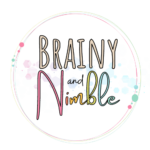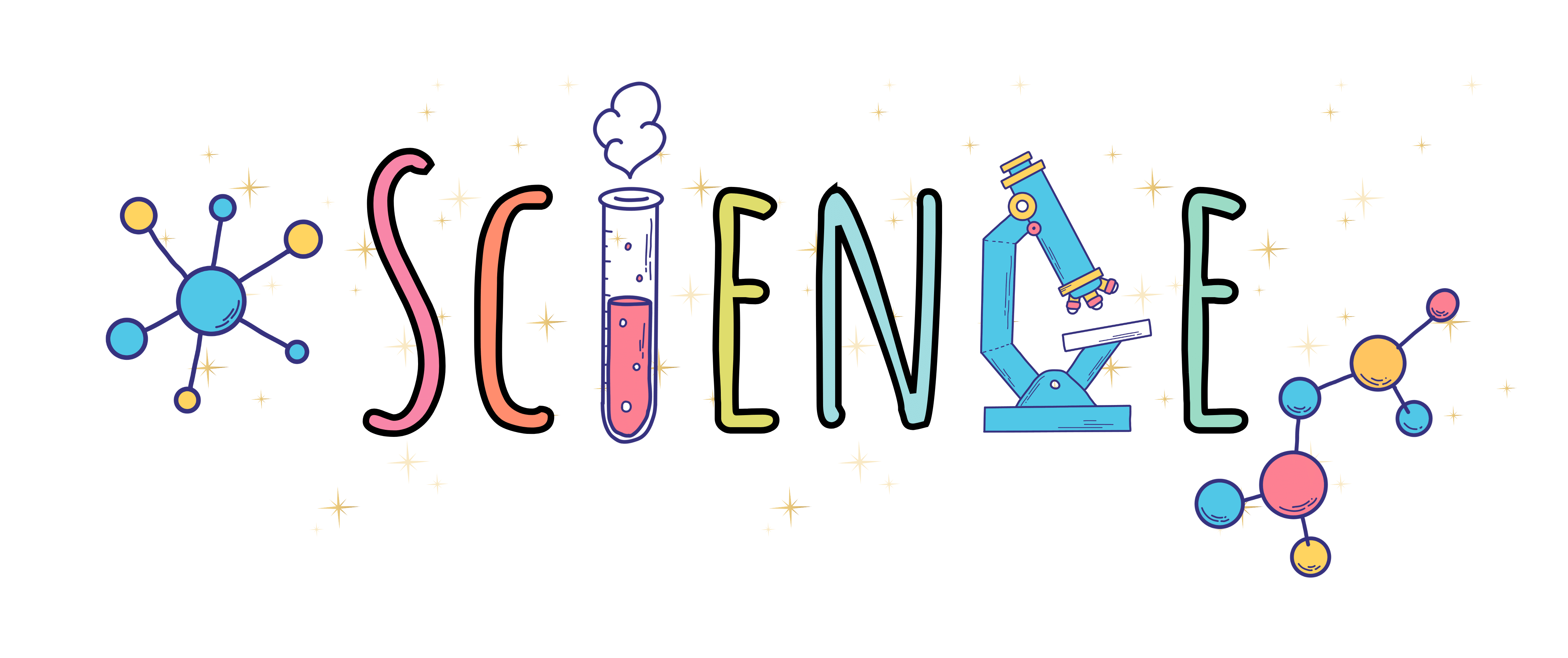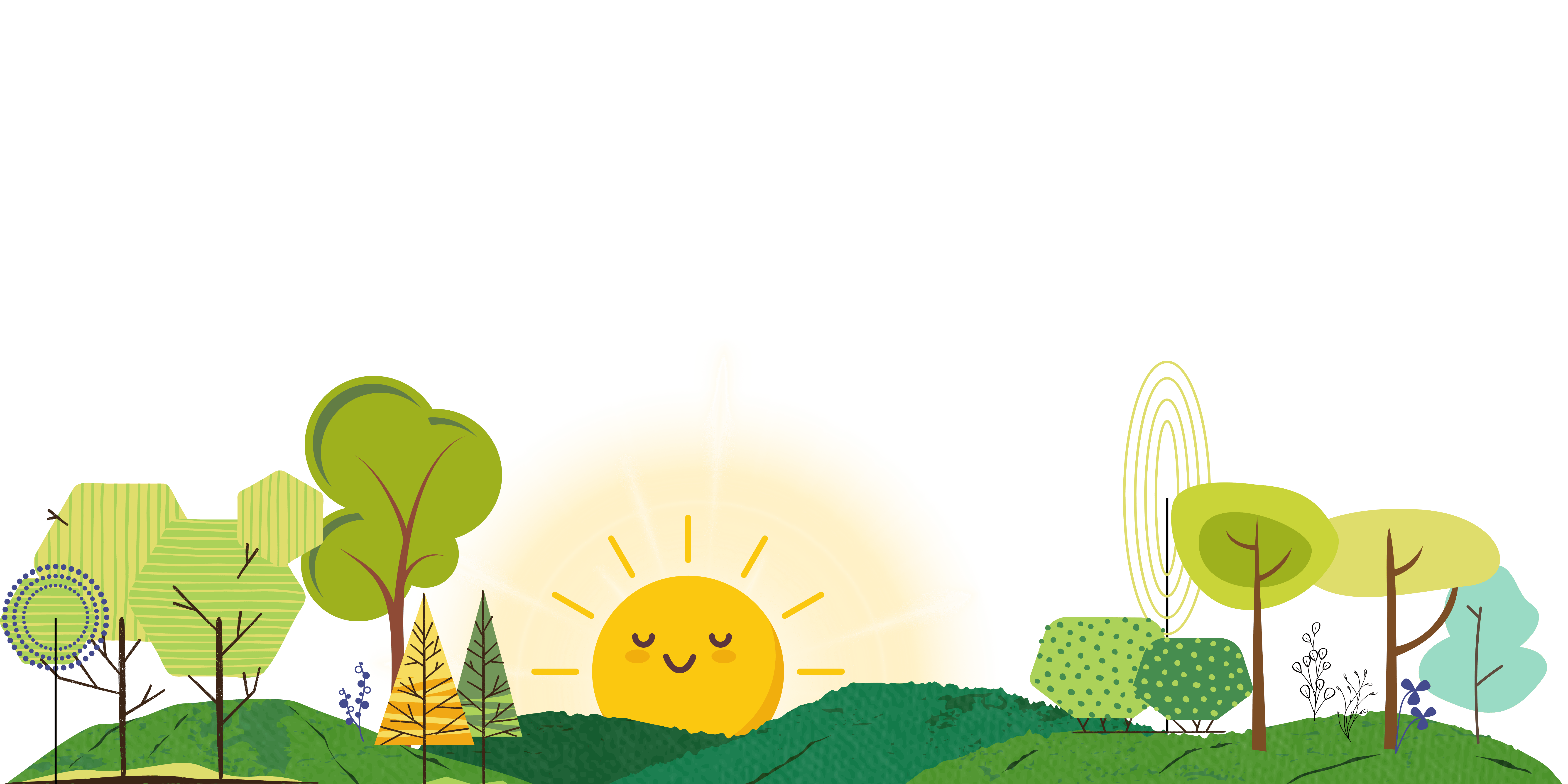Website Disclaimer
Grade levels are intended to offer a broad overview and some guidance for those that find this approach helpful. You’ll find certain subjects covered multiple times, along with a few recurring links. Feel free to delve into areas that both you and your child find most suitable and engaging.
As with all online content, it’s important to supervise the materials linked to this site to ensure they align with your family values and educational approach.
Click On The Subjects Below To Get Started
Materials
Understanding the characteristics of different materials is fundamental in various scientific disciplines, including physics and chemistry. Here’s a guide on how to teach the properties of materials effectively:
Categorize Materials:
Reinforce the concept of categorizing materials based on their properties. Create simple classification charts or tables where students can group materials according to shared characteristics. For example, categorize materials as solids, liquids, or gasses.
Suggested Videos:
- Good Thinking! — What’s the “Matter” with Cells and Atoms? Hunting for Properties: Crash Course Kids #9.1
- Matter Compilation: Crash Course Kids
- Material World: Crash Course Kids #40.1
- What’s My Property: Crash Course Kids #35.2
- Materials And Their Properties
- Organizing Properties: Crash Course Kids #35.1
States of Matter
Everything around us, like water, air, and even you are made up of tiny particles called molecules. These molecules can behave in different ways, and we call these different behaviors the ‘states of matter.’ There are three main states of matter: Solid, liquid, and gas.
- Solids have tightly packed molecules that do not allow it to easily change its shape.
- Liquids can take the shape of a container because their molecules can move around but still like to stay close together.
- Gases consist of molecules that move freely and are not closely packed like in the other two states.
Suggested Videos:
- Science Max | WHY THINGS FLOAT | Kids Science | Experiments
- States of Matter for Kids | Solids, Liquids, and Gases
- Science Max | FULL EPISODE | States Of Matter | Season 1
- States of matter for kids – What are the states of matter? Solid, liquid and gas
- Wood, Water, and Properties: Crash Course Kids #15.1
- PLASMA – The Boss Of All States Of Matter | MONSTER BOX
- Science Max | FULL EPISODE | States Of Matter | Season 1
Suggested Products:
Recommended for readers ages 7-9 years old.
How Do Molecules Stay Together?: A Book About Chemistry
The How Do series encourages readers to guess and delve into the scientific explanations behind correct answers. This latest addition to the series delves into fundamental principles of chemistry, such as atoms, elements, compounds, reactions, and more, presenting the information in an informative and captivating manner.
Phase Change
Matter can not only exist in different forms, it can change from one form to another. Below are the different phases:
Melting:
Imagine your favorite ice cream on a hot day. As the sun shines, the ice cream starts to melt, right? That’s because it’s turning from a solid into a liquid. When something changes from a solid to a liquid, we call it melting.
Freezing:
Think about putting juice in the freezer. It turns from a liquid into ice. So, when something changes from a liquid to a solid, we call it freezing.
Evaporation:
Picture a puddle after the rain. As the sun comes out, the puddle disappears. When a liquid, like water, turns into an invisible gas, we call it evaporation.
Condensation:
The opposite of evaporation is condensation. Think about your cold drink on a warm day. Water droplets form on the outside of the cup. That’s condensation—when a gas turns back into a liquid.
Suggested Videos:
- Change of State – More Grades 3-5 Science on the Learning Videos Channel
- What Is Matter? – The Dr. Binocs Show | Best Learning Videos For Kids | Peekaboo Kidz
- Changing water- States of matter Chemical Changes: Crash Course Kids #19.2
- Properties of Matter for Kids | Science Lesson for Grades 3-5 | Mini-Clip
- Changing water- States of matter
- “Our World: Melting and Freezing” by Adventure Academy
- The changes in the states of matter – Fusion, Vaporization, Condensation and Solidification
- Changes of State | Matter | Physics | FuseSchool Changes of States of Matter
- Solid, liquid, gas and … plasma? – Michael Murillo
Mixtures
A mixture is when you mix two or more things together and each thing keeps its own properties. The substances in a mixture are joined together physically, not chemically. It’s like putting different ingredients into a bowl without changing what they are.
Suggested Videos:
Heat & Thermal Energy
Heat is a form of energy associated with the motion of atoms and molecules in a substance. It is transferred when there is a temperature difference between two systems. Heat transfer can occur through three main mechanisms: conduction, convection, and radiation.
Heat is the energy transfer that changes the thermal energy of a system. When heat is added to a substance, its particles move faster, increasing its thermal energy.
In summary, heat is the transfer of energy between systems due to temperature differences, while thermal energy is the internal energy of a system associated with the motion of its particles.
Suggested Videos:
Physical & Chemical Changes
Physical Changes:
- Definition: A physical change is when something about a substance changes, like its shape or state, but it’s still the same substance.
- Examples: Breaking a chocolate bar into pieces, melting ice into water, or crumpling a piece of paper.
- Reversibility: Physical changes are often reversible. You can undo them and get back to the original substance.
Chemical Changes:
- Definition: A chemical change is when substances react and form new substances with different properties. It involves a change in the chemical composition.
- Examples: Burning wood (it turns into ash), cooking an egg (it changes from a liquid to a solid), or rusting of iron.
- Irreversibility: Chemical changes are often not easily reversed. Once the change happens, it’s challenging to go back to the original substances.
Suggested Videos:
Force & Motion
- Force is a push or a pull on an object. It can make things start moving, stop moving, or change their direction.
- Motion is when something is moving. It can be a change in position or location.
Ramp & Ball Activity:
- Materials: Small ball, ramp (can be made from a board or a piece of cardboard).
- Procedure:
- Place the ball at the top of the ramp and let it roll down.
- Try changing the steepness of the ramp and observe how it affects the motion of the ball.
- Explanation: This experiment helps to understand how the angle of a surface (ramp) influences the force of gravity and the resulting motion.
Suggested Videos:
Suggested Products:
Recommended for readers ages 8-12 years old.
Physics for Curious Kids: An Illustrated Introduction to Energy, Matter, Forces, and Our Universe
Dive into the world of physics with this lively hardback, adorned with an eye-catching jacket. Bursting with vivid, clear, and captivating explanations, it unravels the complexities of physics, encompassing topics such as matter and motion, space and time, as well as energy and forces. Designed to support STEM learning, this book serves as an excellent complement to school education, presenting core concepts in an entertaining and easily digestible manner.
Electricity
Electricity is a type of energy created by the movement of tiny particles called electrons.
Flow of Electricity:
- Current: The flow of electric charge is called current.
- Circuits: A circuit is like a pathway for the electric current to flow. It includes components like batteries, wires, and bulbs.
Voltage and Resistance:
- Voltage (Volts): It’s like the “push” that makes electric charge flow. More voltage means more push.
- Resistance (Ohms): It’s like the “block” in the way of the electric charge. Things like wires and bulbs have resistance.
Suggested Videos:
- The science of static electricity – Anuradha Bhagwat
- ELECTRICITY for kids
- What is electricity?
- The Power of Circuits
- Introduction to Electricity- video for kids
- Energy 101: Electricity Generation
- Nikola Tesla and his incredible inventions
- The History of Nikola Tesla – a Short Story
- Explore Smithsonian: How do Scientists use Electricity to Study Fish Populations?
- What Conducts Electricity?
Suggested Products:
Recommended for ages 8 years old and up.
Snap Circuits “Arcade” Electronics Exploration Kit
Create numerous fascinating electronic devices, all from a single box! This is a safe and enjoyable method to acquaint children aged 8 and older with the fundamentals of electrical engineering. Construct engaging projects and toys by following the vibrant instruction book included in the set. Build 20+ games with fun sounds and lights! 36-piece kit also builds over 200 exciting and unique projects that come together in a snap! Watch your child write their very own spinning LED message- powered by circuits they engineered themselves!
Recommended for ages 8 years old and up.
Snap Circuits Jr. SC-100 Electronics Exploration Kit
Create numerous fascinating electronic devices, all from a single box! This is a safe and enjoyable method to acquaint children aged 8 and older with the fundamentals of electrical engineering. Construct engaging projects and toys by following the vibrant instruction book included in the set. Build a flying saucer in a snap and watch it take off and sound the alarm! Kit includes 29 Snap Circuits parts.
Magnets
A magnet is an object that can attract certain materials, like iron or steel.
Types of Magnets:
- Permanent Magnets: Always magnetic. Examples include fridge magnets and the magnets in toys.
- Temporary Magnets: Can become magnetic but only for a short time. Rubbing a nail with a magnet is an example.
Magnetic Poles:
- North and South Poles: Every magnet has a north pole and a south pole.
- Like and Unlike Poles: Like poles repel (push away), and unlike poles attract (pull together).
Suggested Videos:
Suggested Products:
Properties of Metal
Activity:
Search around the room for metal and consider why it was used over another material. Below are some characteristics to help with the analysis:
Characteristics:
- Often have a shiny and reflective surface.
- Allow heat to move through them easily.
- Allow the flow of electric current.
- Can be hammered or rolled into thin sheets without breaking.
- Generally have high melting and boiling points.
- Often dense materials.
- Can be melted and cast into different shapes.
Suggested Videos:
Living vs Non-Living
Living things, or organisms, are beings that show characteristics of life.
Characteristics of Living Things:
- Cells: Living things are made up of cells, the basic units of life.
- Growth: Living things grow by increasing cell number or size.
- Reproduction: Living things can produce offspring or new individuals.
- Response to Stimuli: Living things respond to changes in their environment.
- Metabolism: Living things use energy to carry out life processes.
- Homeostasis: Living things maintain a stable internal environment.
- Adaptation: Living things can adapt to their environment over time.
Examples:
- Plants, animals, humans, bacteria, and fungi are examples of living things.
Non-living things, also called inanimate objects, do not possess characteristics of life.
Characteristics of Non-Living Things:
- No Cells: Non-living things do not have cells.
- No Growth or Reproduction: They don’t grow or reproduce on their own.
- No Metabolism: They don’t perform life processes like metabolism.
- No Response to Stimuli: They don’t respond to changes in the environment.
- No Adaptation: They don’t adapt to their surroundings.
Examples:
- Rocks, water, air, a chair, and a book are examples of non-living things.
Suggested Videos:
Suggested Products:
Recommended for readers ages 8-12 years old.
Tree of Life: The Incredible Biodiversity of Life on Earth
Imagine Earth as a giant tree, with each known species being a leaf. This enormous tree would have 1,750,000 leaves! Even though humans are just one leaf on this tree, there’s so much for us to discover about the millions of other life forms we share our world with. “Tree of Life” is a beautifully illustrated and kid-friendly introduction to biodiversity. It explores how living things are classified into five kingdoms, revealing fascinating insights into every aspect of life on our planet. This book is part of CitizenKid, a collection that aims to inform children about the world and inspire them to be better global citizens.
Cells
What is a Cell?
- Building Blocks:
- Imagine your body is like a big city, and cells are the tiny building blocks that make everything!
- Little Factories:
- Cells are like tiny factories inside your body. They work together to keep you healthy and help you grow.
- Different Jobs:
- Just like people have different jobs in a city, cells have different jobs too! Some help you see, some help you breathe, and some help you move.
Types of Cells:
- Animal Cells:
- You are made up of animal cells! They have a round shape and help you do lots of things, like run and play.
- Plant Cells:
- Plants are also made of cells! Plant cells are like little boxes; they help plants grow and make food from the sun.
Suggested Videos:
Vertebrates vs Invertebrates
Vertebrates:
- Definition: Vertebrates are animals with backbones.
Examples:
- Mammals: Dogs, cats, elephants, and you!
- Birds: Eagles, penguins, and parrots.
- Reptiles: Snakes, turtles, and crocodiles.
- Amphibians: Frogs, toads, and salamanders.
- Fish: Goldfish, sharks, and trout.
Invertebrates:
- Definition: Invertebrates are animals without a backbone. Invertebrates don’t have a backbone, but they find other ways to move and protect themselves.
Examples:
- Insects: Butterflies, ants, and bees.
- Worms: Earthworms that wriggle in the soil.
- Mollusks: Snails with shells and squishy octopuses.
- Arachnids: Spiders, scorpions, and ticks.
- Jellyfish: Soft, wobbly creatures in the sea.
Fun Fact:
- Majority Rules: Most animals are invertebrates. They make up about 97% of all animal species.
Suggested Videos:
Suggested Products:
Recommended for ages 6 years and up.
Dissect-It Plus Upgraded Frog Dissection Toy Kit, Realistic Lab Experience
Dissect-It Plus Frog kit gives the realistic experience of a dissection without the use of a real frog. The Dissect-It Plus Frog features a complete skeletal structure, a full set of organs, plus veins and arteries. Learn about everything inside a frog as you follow the instructions.
Recommended for readers ages 9-12 years old.
Animal! Hardcover
This comprehensive encyclopedia introduces young readers to the major animal groups and their placement in the tree of life. From invertebrates and fish to reptiles, amphibians, birds, mammals, and beyond, this captivating animal book is brimming with fun facts about both well-known and lesser-known species.
Biomes & Ecosystems
An ecosystem is like a big community of living and non-living things that depend on each other. It’s where plants, animals, and even tiny things like bugs all live together.
Components of an Ecosystem:
- Living Things: Plants, animals, insects, and even people!
- Non-Living Things: Sunlight, air, water, and soil.
How They Work Together:
- Everything in an ecosystem helps each other. Plants use sunlight to make food, animals eat plants or other animals, and they all need clean water and air.
Example:
- Think of a pond as an ecosystem. Fish live in the water, frogs jump around, plants grow along the edge, and the sun gives them all energy.
A biome is a big area on Earth with similar weather, temperature, and plants. It’s like a neighborhood for nature.
Types of Biomes:
- Desert: Hot during the day, cold at night, and not much rain.
- Rainforest: Warm, lots of rain, and tons of different plants and animals.
- Tundra: Cold, with snow and ice, and short plants.
- Grassland: Not too hot, not too cold, and lots of grass.
- Forest: Trees everywhere, and some are always green (evergreen).
Animals in Biomes:
- Each biome has animals that are perfectly suited to live there. Polar bears love the cold in the Arctic, while camels are great for the hot desert.
Example:
- The Amazon Rainforest is a biome. It’s warm and gets a lot of rain, therefore it’s filled with colorful birds and plants that thrive in humidity.
Suggested Videos:
- Introduction to Biomes
- AQUATIC ECOSYSTEMS
- Aquatic Biomes
- The Basics of Freshwater: Crash Course Kids 14.1
- What is Biodiversity?
- Biodiversity
- Why is biodiversity so important? – Kim Preshoff
- Biomes and Ecosystems for Kids
- Home Sweet Habitats: Rainforest
- Rainforests 101 | National Geographic
- What are temperate rainforests?
- Deserts 101 | National Geographic Deserts of the World
- TUNDRA BIOME | What Is A Tundra Biome?
- What Are Tundras? | National Geographic
- Home Sweet Habitats: Grasslands
- The Savannah Biome – Biomes #2
- The Taiga Biome (Boreal Forest) – Biomes #7
- Understanding Ecosystems for Kids
- Temperate Deciduous Forest Habitat
- Coniferous VS Deciduous Trees
- Chaparral Biome
- Fabulous Wetlands with Bill Nye The Science Guy (1989)
- Interactions in Ecosystems – Wetlands
- ECOSYSTEM – The Dr. Binocs Show
- Habitats: What is a habitat? [FREE RESOURCE]
- Ecosystems Episode 1: What is an ecosystem?
- Ecosystems Episode 2: The Forest Ecosystem!
- Ecosystems Episode 3: The Grassland Ecosystem!
- Ecosystems Episode 4: The River Ecosystem! (1/2)
- Ecosystems Episode 4: The River Ecosystem! (2/2)
- Ecosystems Episode 5: The Wetland Ecosystem! (4K)
Suggested Products:
Recommended for readers ages 6-10 years old.
Nature School: Lessons and Activities to Inspire Children's Love for Everything Wild
Embark on a journey through five of Earth’s largest biomes, delving into the study of plants, animals, and their remarkable adaptations for survival. This immersive experience includes hands-on nature experiments.
Ecological Relationships
In nature, plants and animals are like friends who live together and sometimes help or depend on each other.
Types of Relationships:
- Friendship (Mutualism):
- Some friends help each other. For example, bees help flowers by collecting nectar, and in return, flowers give bees pollen.
- Sharing (Commensalism):
- Sometimes, one friend benefits, and the other is not really bothered. Like birds building nests in trees—they get a home, and the tree isn’t harmed.
- One-Sided Help (Parasitism):
- In this friendship, one friend helps itself but bothers the other. Think of ticks or fleas on animals—they get a meal, but the animal is harmed.
Understanding these ecological relationships helps us see how every living thing has its own role and how they work together to create a healthy and happy environment.
Suggested Videos:
Suggested Products:
Recommended for readers ages 8-10 years old.
Animal Sidekicks: Amazing Stories of Symbiosis in Animals and Plants
Ever heard of the fish that act as dental hygienists for sharks? How about the frog that shares a home with a tarantula? Step into the extraordinary realm of symbiosis, where animals forge remarkable connections.
Life Cycles
A life cycle is the journey of a living thing as it grows, develops, and becomes capable of making new life.
Plant Life Cycle:
- Seed:
- It all starts with a tiny seed. This is like a plant’s baby.
- Sprout:
- The seed grows into a little sprout. It starts to peek out of the ground.
- Seedling:
- The sprout becomes a seedling with leaves. It’s like a young plant.
- Adult Plant:
- The seedling grows into a big, adult plant. It can now make its own seeds and start the cycle again.
Butterfly Life Cycle:
- Egg:
- A butterfly starts as a tiny egg, often laid on a leaf.
- Caterpillar (Larva):
- The egg hatches into a caterpillar. It eats a lot to grow.
- Pupa (Chrysalis):
- The caterpillar makes a protective covering called a chrysalis. Inside, it transforms into a butterfly.
- Adult Butterfly:
- The butterfly comes out of the chrysalis, dries its wings, and is now an adult ready to flutter around and lay eggs.
Frog Life Cycle:
- Egg Mass:
- Frogs start as eggs laid in water.
- Tadpole:
- The eggs hatch into tadpoles. Tadpoles look like fish and live in water.
- Young Frog (Froglet):
- Tadpoles grow legs and turn into small frogs called froglets.
- Adult Frog:
- Froglets grow into adult frogs. They can now live both in water and on land.
Suggested Videos:
Suggested Products:
Recommended for ages 5 years old and up.
Learning Resources Butterfly Life Cycle, 9 Write and Wipe Pieces
Introduce your students to the captivating world of a butterfly’s life cycle with our realistically detailed jumbo magnets. These magnets are designed to help students visually explore and understand each stage of the butterfly’s life cycle. With these jumbo magnets, you can easily model the complete life cycle directly on the whiteboard, making the learning experience engaging and interactive. The set includes nine write-and-wipe pieces, allowing students to participate actively in the learning process. Each magnet is intricately detailed to provide a realistic representation of the butterfly’s journey from egg to caterpillar, pupa (chrysalis), and finally, to the adult butterfly.
Montessori Life Cycle Learning & Education Toys
Life cycle manipulatives offer a visual representation of complex biological processes. Seeing a tangible model of a life cycle, whether it’s for plants, animals, or insects, helps students conceptualize and internalize the stages more effectively than just looking at pictures or reading about them.
Zoology
Animal Scientists:
- Zoology is like being a detective for animals. Zoologists are scientists who study animals and learn everything about them.
- Zoologists look at all kinds of animals, from tiny ants to big elephants and everything in between.
How Zoologists Study Animals:
- Observing:
- Zoologists watch animals in their homes, like forests, oceans, or even your backyard, to see what they do.
- Asking Questions:
- They ask questions like “What do animals eat?” or “How do they move?”
- Looking at Bones:
- Zoologists might even look at the bones of animals to learn how they’re built.
Types of Animals:
- Mammals:
- Example: Dogs, cats, elephants, and humans.
- Characteristics: They have fur or hair, and many give birth to live babies.
- Birds:
- Example: Eagles, penguins, and owls.
- Characteristics: Birds have feathers and lay eggs.
- Reptiles:
- Example: Snakes, turtles, and crocodiles.
- Characteristics: Reptiles often have scales on their skin.
- Amphibians:
- Example: Frogs, toads, and salamanders.
- Characteristics: Amphibians can live both in water and on land.
- Fish:
- Example: Goldfish, sharks, and trout.
- Characteristics: Fish have scales and live in water.
- Insects:
- Example: Butterflies, ants, and bees.
- Characteristics: Insects have six legs and often have wings.
Fun Fact:
- Zoologists help us understand animals better so we can take care of them and their homes.
Zoology is like a big adventure where scientists explore the amazing world of animals, discovering how they live, what they eat, and how they’re all connected in nature.
Suggested Videos:
- Caribou Search for Food During a Cold Winter
- The Life Of An African Wild Dog (Animal Documentary) | Real Wild
- Why Spider Silk is Stronger Than Steel
- Silkworms Spin Cocoons That Spell Their Own Doom | Deep Look
- Wild Kratts | Leafcutter Ants |Nature
- Where Are the Ants Carrying All Those Leaves? | Deep Look
- My Dream Ant Farm: Leafcutter Ants
- Animal Teamwork – Why Do Animals Team Up?
- The Insane Biology of: The Mantis Shrimp
- The Forgotten Dragons: Saving The Neuse River Waterdog
- Are Orb Weaver Spiders Dangerous? Handling A Spotted Orb Weaver!
- Animal Tricksters!
Suggested Products:
Recommended for readers ages 9-12 years old.
Zoology: Inside the Secret World of Animals
Delve into the wonders of evolution and discover how it has enabled wildlife to adapt to unique environments. Whether it’s the ability to thrive in challenging habitats, adjust to specific diets, or achieve physical prowess, this visual reference book provides a wealth of knowledge on the remarkable world of animals. The exploration spans mammals, reptiles, birds, and sea creatures, employing a unique head-to-toe approach that highlights special features in breathtaking detail, such as the flight feathers of a parrot, the antenna of a moth, or the tentacles of coral.
Plants
Plants Make Their Own Food:
- Magic Makers: Plants are like magic chefs. They use sunlight to make their own food through a process called photosynthesis.
Leaves, Stems, and Roots:
- Leafy Chefs: Leaves are like the kitchen where plants make food. Stems are the plant’s support, like its backbone. Roots are like the plant’s feet, anchoring it in the ground and taking in water.
Plants Drink Water:
- Thirsty Plants: Just like you drink water, plants do too! They use their roots to drink water from the ground.
Plants Breathe, Too:
- Breathing Leaves: Plants breathe through tiny holes in their leaves called stomata. They take in air and let out oxygen.
Making Baby Plants:
- Seed Magic: Plants can make baby plants by using seeds. Seeds are like tiny plant babies waiting to grow.
Changing with the Seasons:
- Seasonal Wardrobe: Plants change with the seasons. In spring, they bloom with flowers, and in fall, they might drop their leaves.
Different Shapes and Sizes:
- Plant Variety: Plants come in all shapes and sizes. Some are tall trees, and some are tiny flowers.
Helping Each Other:
- Plant Friends: Plants can be friends with animals. Bees and butterflies visit flowers, helping them make more plants.
Suggested Videos:
- Fruits And Vegetables – What’s The Difference?
- What’s the Difference Between Fruits and Vegetables?
- Parts of Plants for Kids | Learn all about plant parts and their functions
- Parts of a Plant and Their Functions for Kids | Root, Stem, Leaf, Flower & Fruit
- Photosynthesis for Kids | Learn how plants MAKE their own food
- Good Thinking! — Photosynthesis: Blinded by the Light
- Flowering and non flowering plants | Plant life cycle | Video for Kids
- The Life Cycle of a Flowering Plant
- Plant spores vs seeds
- Up Close with Spores and Ferns
- How Can You Classify Plants?
Suggested Products:
Recommended for readers ages 4-7 years old.
The Big Book of Blooms (The Big Book Series)
Discover the diverse realm of plants, ranging from tiny seeds to towering trees. Immerse yourself in the intriguing details of the most peculiar, aromatic, and perilous flowers found on Earth through this captivating encyclopedia.
Recommended for readers ages 4 years old and up.
Backpack Explorer: Discovering Trees: What Will You Find?
Packed with engaging activities, young explorers will be prompted to stop, look, listen, and touch as they interact with the natural world. The book includes interactive field guides for identifying common trees, hands-on craft projects like making a tree rubbing or a nature mask from colorful leaves, and delightful discovery features with interesting tree facts. Equipped with a real magnifying glass, stickers, and a log for recording tree finds, this book becomes the perfect companion for any nature adventure.
Recommended for readers ages 3-8 years old.
RHS The Magic & Mystery Trees
Flip through breathtaking illustrations to uncover the ways in which trees contribute to preventing soil erosion, delineating the seasons, and creating habitats for wildlife. Delve into a wealth of factual, entertaining, and insights into their crucial role in nature. Engage in practical activities, including planting your own tree and identifying a tree’s age, for an enriching experience.
Recommended for readers ages 5-9 years old.
Trees, Leaves, Flowers and Seeds: A Visual Encyclopedia of the Plant Kingdom
Discover the diverse realm of plants, ranging from tiny seeds to towering trees. Immerse yourself in the intriguing details of the most peculiar, aromatic, and perilous flowers found on Earth through this captivating encyclopedia.
Traits & Heredity
Traits are like the special features or qualities that make each person, plant, or animal different from others.
Heredity is like getting a set of instructions from your family. It’s the passing of traits from parents to their children.
- Inherited or Learned:
- Some traits you are born with, and some you learn as you grow. It’s what makes you, you!
Understanding traits helps us appreciate the diversity in people, animals, and plants, making each one special and unique.
Suggested Videos:
- Learned traits vs inherited traits explained for kids PLUS instincts, behaviors, and genes
- Inherited Traits Video Lesson for Kids | Grades 3-5 Science | Mini Clip
- Inherited and Acquired Traits | What’s the Difference? | EdZOOcating
- It’s All in the Genes—Inheritance and Variation of Traits
- Inherited and Acquired Traits
Adaptations
Adaptations are like special tools or features that animals and plants have to help them survive in their homes. These tools or features make it easier for them to find food, stay safe, and have offspring in their environment.
Types of Animal Adaptation:
Camouflage:
- What It Is: Some animals have colors or patterns that help them blend into their surroundings.
- Example: A chameleon changing color to match the leaves it sits on.
Mimicry:
- What It Is: Animals copy the look or sound of other animals and objects to trick predators or prey.
- Example: The viceroy butterfly looks like the poisonous monarch butterfly to avoid being eaten.
Hibernation:
- What It Is: Some animals sleep for a long time during winter when food is scarce.
- Example: Bears sleeping in a den during the winter.
Migration:
- What It Is: Animals move from one place to another to find food or escape the cold.
- Example: Birds flying south for the winter.
Mouth and Teeth Adaptations:
- What It Is: Animals have special mouths and teeth for the kind of food they eat.
- Example: Carnivores (meat-eaters) have sharp teeth, while herbivores (plant-eaters) have flat teeth.
Sharp Claws or Talons:
- What It Is: Animals have sharp claws or talons for catching prey or climbing.
- Example: Eagles using their talons to catch fish.
Webbed Feet or Fins:
- What It Is: Animals that live in water have webbed feet or fins for swimming.
- Example: Ducks with webbed feet and fish with fins.
Long Necks or Limbs:
- What It Is: Animals have long necks or limbs to reach food in high places or run fast.
Example: Giraffes using their long necks to reach leaves high in trees.
Types of Plant Adaptations:
- Thorns or Spikes:
- Some plants have thorns or spikes to protect themselves from animals that might want to eat them.
- Seeds that Fly:
- Plants like dandelions have seeds that can be carried by the wind. It helps them spread to new places.
- Big Leaves or Tiny Leaves:
- Plants in hot places might have big leaves to get more shade, while plants in dry places might have tiny leaves to save water.
Suggested Videos:
Food Webs
Food Chain:
- Producers make food.
- Consumers eat food.
- Decomposers break down remains and waste, returning nutrients to the soil.
Example Food Chain:
- Grass (Producer) -> Rabbit (Herbivore – Consumer) -> Fox (Carnivore – Consumer) -> Earthworms (Decomposers – Break down remains).
Build a Food Web Activity:
- Draw a picture of a simple ecosystem with plants, animals, and decomposers. Connect them with arrows to show who eats whom.
Suggested Videos:
- Food Webs and Energy Pyramids: Bedrocks of Biodiversity
- What Is A Food Chain?
- What is a food chain and the different roles in it
- What is the Food Chain – More Real World Science on the Learning Videos Channel
- Flow of energy and matter through ecosystem | Ecology | Khan Academy
- Energy transfer in food chains
- Learning About Food Chains
Astrology
Astronomy is like being a detective of the sky. Astronomers study stars, planets, and everything beyond our Earth.
Suggested Videos:
- Could I Dig a Hole Through the Earth?
- Formation Of The Earth
- Moon Phases Demonstration
- Saturn’s Moon Titan
- Planet Cosmo | Every Planet in Our Solar System Explored
- Planet Cosmo | What are Meteoroids? | Full Episodes | Wizz Explore
- @PlanetCosmoTV | The Astronaut Dog
| Full Episodes | Wizz Explore
- Journey Into Space
Recommended for readers ages 8-12 years old.
Space Encyclopedia, 2nd Edition: A Tour of Our Solar System and Beyond
Enjoy awe-inspiring views of the universe captured by cutting-edge technology, including the historic first-ever image of a black hole. This comprehensive reference is a treasure trove of knowledge for kids, covering everything from our sun and planets (including the new dwarf planets) to the formation of the universe, space travel, the potential for life beyond Earth, and more.
Recommended for readers ages 8-12 years old.
Physics for Curious Kids: An Illustrated Introduction to Energy, Matter, Forces, and Our Universe
Dive into the world of physics with this lively hardback, adorned with an eye-catching jacket. Bursting with vivid, clear, and captivating explanations, it unravels the complexities of physics, encompassing topics such as matter and motion, space and time, as well as energy and forces. Designed to support STEM learning, this book serves as an excellent complement to school education, presenting core concepts in an entertaining and easily digestible manner.
Learn about celebrations that take place across the world and gain a deeper appreciation for the global tapestry of cultures. Each holiday is accompanied by an exciting craft project or recipe for the whole family to take part in.
- Holidays for Every Month
- Cultures & Traditions
- Crafts

- @MrDeMaio
- @MiacademyLearningChannelK-8
- @LearnBright
- @Factsforkids
- @ScienceMax
- @SciShowKids
- @SciShow
- @DaVinciGlobal
- @BealsScience
- @AtomicSchool
- @ColossalCranium
- @ScienceMax
- @AmoebaSisters
- @BioManBiology
- @JaredOwen
- @howitsmadeofficial1334
- @BRIGHTSIDEOFFICIAL
- @CuriosityStreaming
- @Vsauce
- @MarkRober
- @smartereveryday
- @ScienceAndPlants
- @Wondrium
- @realscience
- @TheRealBillNye
- @MysterySci
- @crashcoursekids
- @ScienceMom
- @kernwildlife
- @ProfessorDaveExplains
- @funsciencedemos
- @TheDadLab
- @MrWizardStudios
- @funsciencedemos
- @sciencechannel
- @TheBackyardScientist
- @besmart
- @MrBradleyLearningMadeFun
- @AmoebaSisters
- @BioManBiology
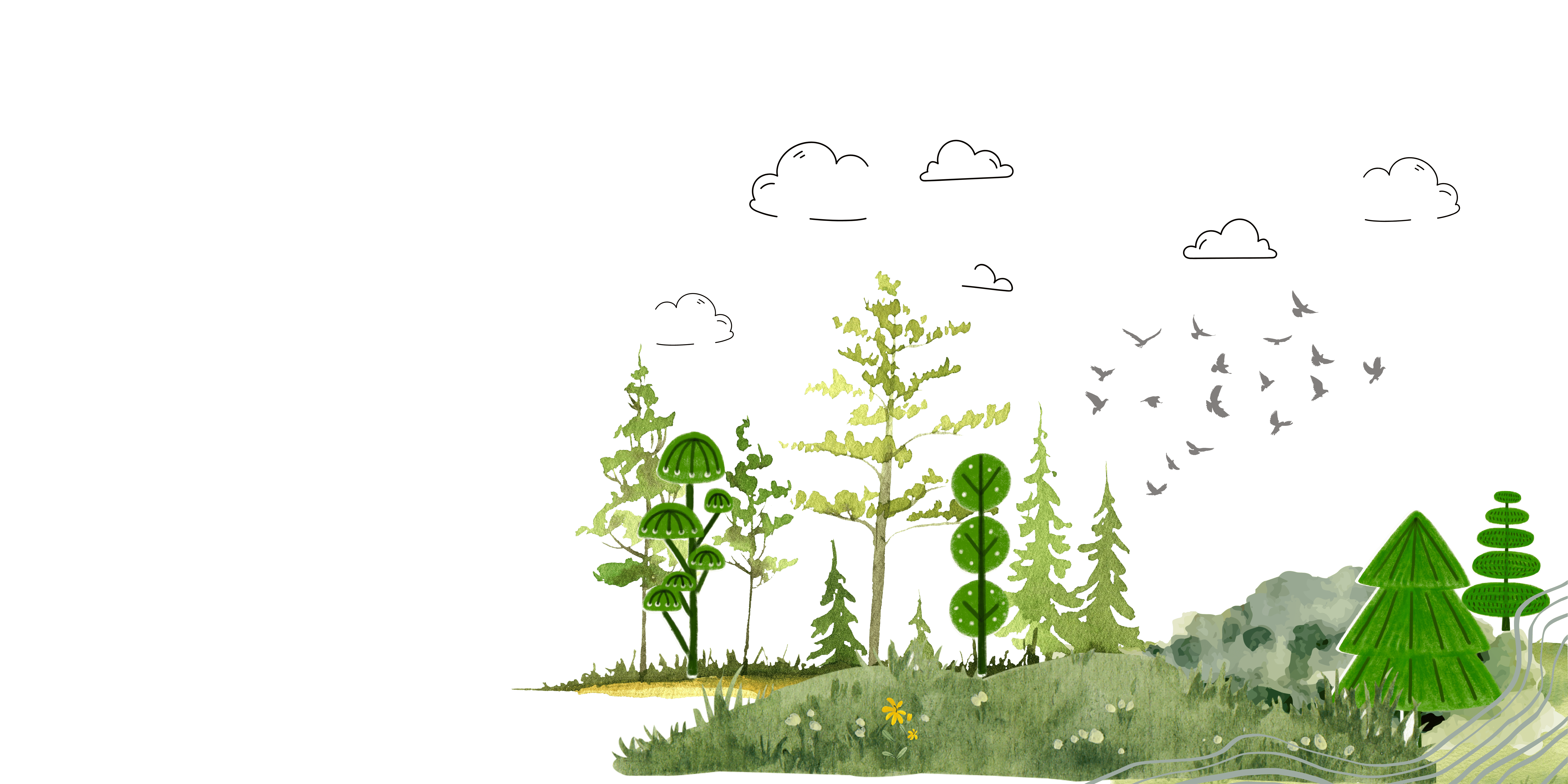
More Content Coming Soon
At Brainy and Nimble, we are dedicated to providing comprehensive educational resources. Additional grade levels and enriching content are in the pipeline. Stay tuned for our upcoming additions as we continue to expand our offerings and support learners at every stage of their educational journey.
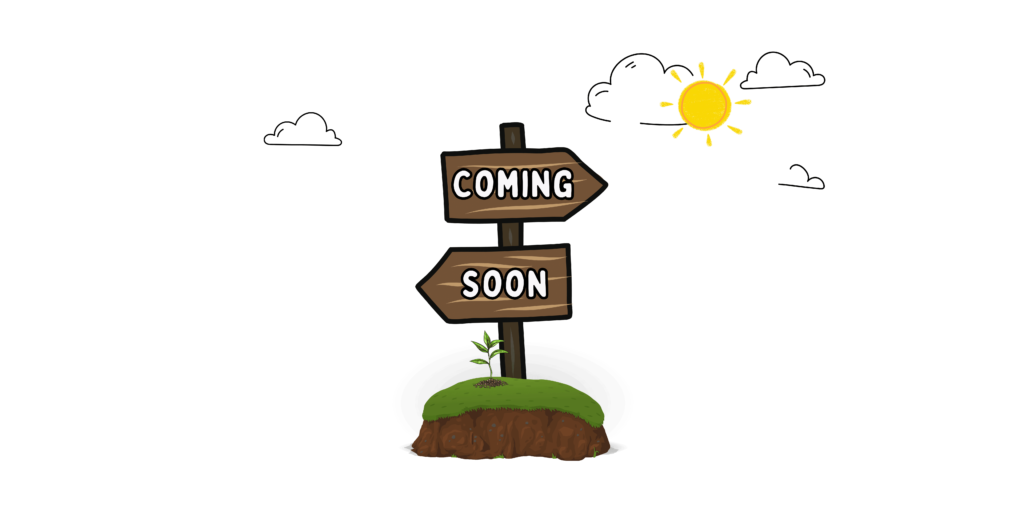
Please note that this website contains affiliate links, through which I earn a small commission from any purchases made. While it is not mandatory to use these links, your support is always greatly appreciated as these funds help support the maintenance and development of this website.
This commission comes at no additional cost to you.
